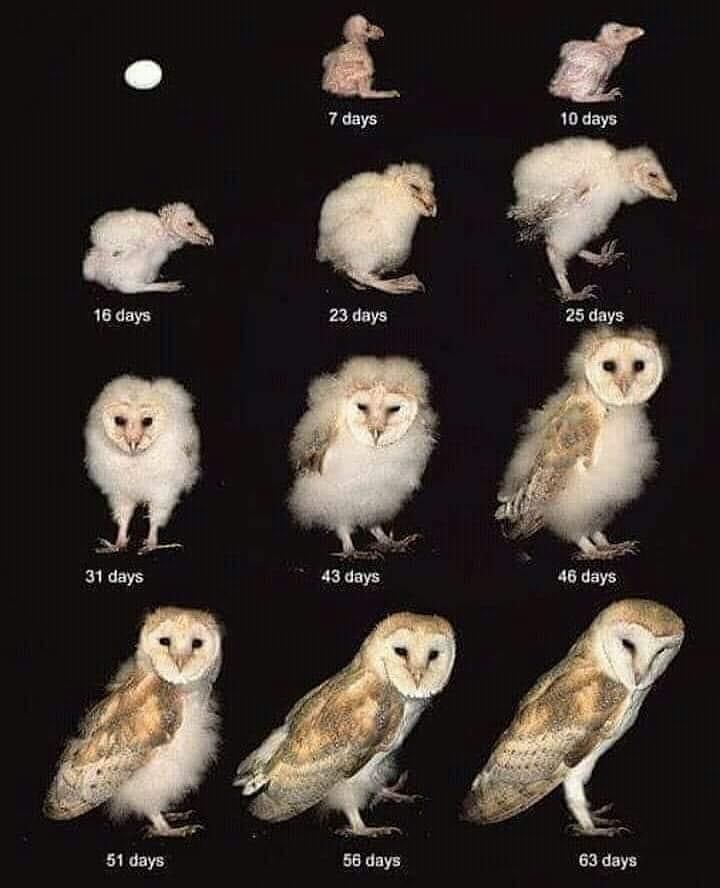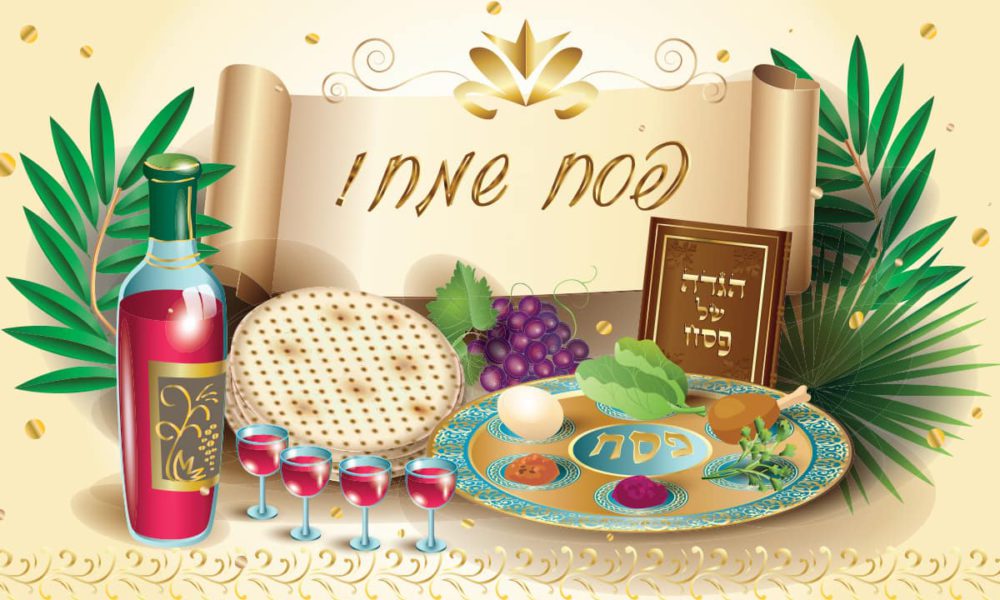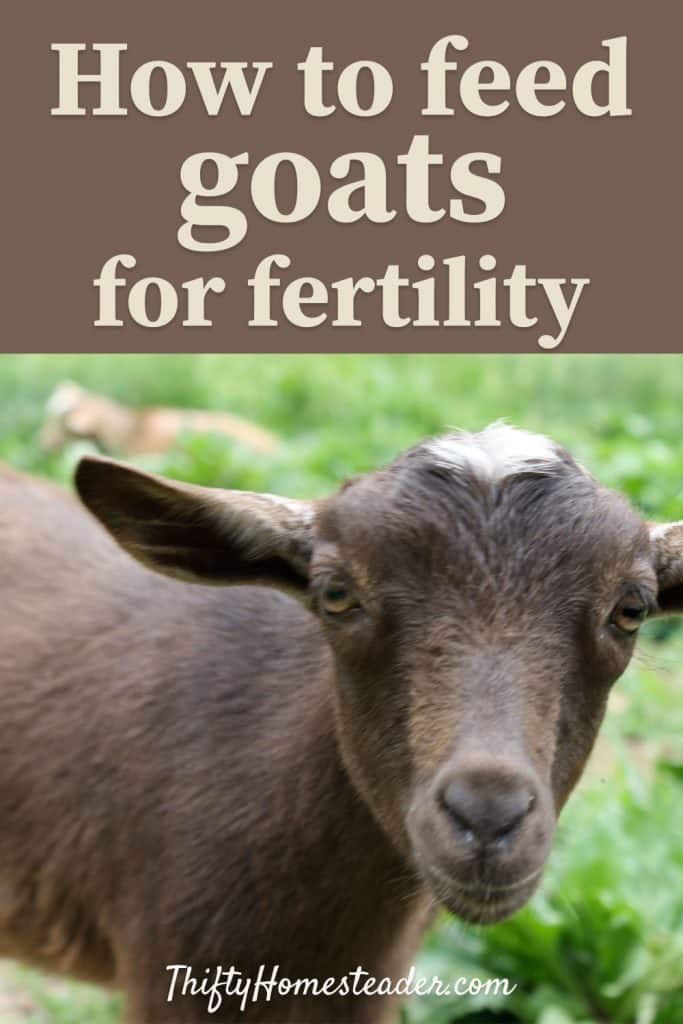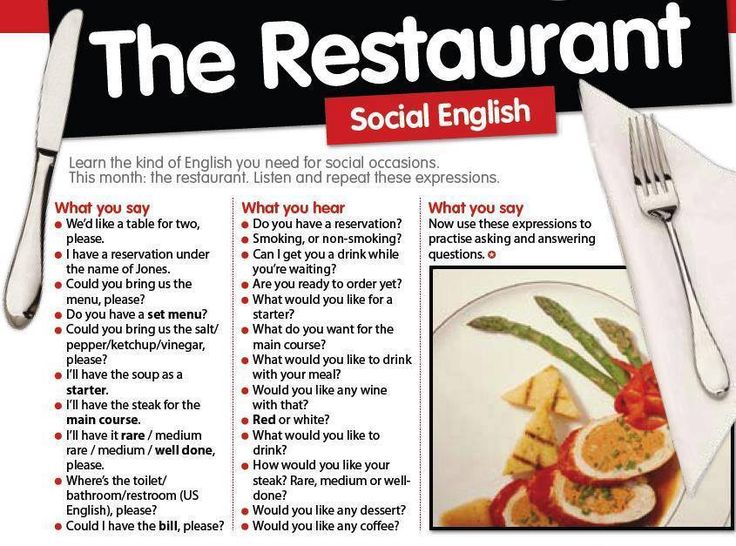What to feed baby owls
Baby Owls: All You Need To Know (with Pictures)
What does a baby owl look like?
How big are baby owls?
How much do baby owls weigh?
What do juvenile owls look like?
What is a baby owl called?
What is a group of baby owls called?
Do baby owls flock together?
What do baby owls eat?
How do baby owls learn to hunt?
What do owl eggs look like?
How long do owl eggs take to hatch?
When do owls lay eggs?
How do owls feed their chicks?
When can baby owls fly?
When do baby owls leave their nests?
Do owls reuse nests?
How long do baby owls stay with their parents?
Do owls abandon their babies?
Why do baby owls sleep with their heads down?
Owls are secretive creatures. In fact, anyone would be lucky to see an owl in the wild - you’re much more likely to hear their distinctive hooting sound instead!
To see a baby owl would be even less likely, so we’ve created this article on everything you need to know about baby owls alongside plenty of baby owl pictures.
What does a baby owl look like?
Most baby owls are extremely fluffy, usually covered in a very thick white or grey down. They often have black button-like round eyes and heart-shaped heads. A hook-shaped beak protrudes from the fluff. Baby owls also have a quite pronounced egg tooth, a sharp protrusion from their beak that allows them to pierce the egg whilst hatching. These disappear within a week or so of hatching.
Some baby owls do have quite a peculiar look, especially Barn owls, who can have quite pronounced long faces that contrast with their white fluffy bodies.
A baby Tawny Owlet
How big are baby owls?
The owlets of even the largest owls, such as the Great Horned owl, Snowy owl and Eurasian Eagle owls, are pretty small considering how large some of these birds are. Snowy owl chicks, for example, are just a minuscule 6.5cm (2.5in) tall. Fully grown, they stand at around 2.5 feet tall!
It’s a similar story with Great Horned owls, who are just around 3 inches tall at birth. Owl chicks grow at an astonishing rate but amongst the smallest and most helpless of all baby birds. This is quite typical of birds of prey, and it means that the first few days of life are absolutely critical to long-term survival.
Owl chicks grow at an astonishing rate but amongst the smallest and most helpless of all baby birds. This is quite typical of birds of prey, and it means that the first few days of life are absolutely critical to long-term survival.
How much do baby owls weigh?
The babies of even large owl species will only reach around 40g to 60g (2oz) at birth. For comparison, a standard chicken chick might weigh approximately 30g and a duckling around 50g. Great Horned owl babies weigh just around 35g (1.2oz). As a rule, owlets really are very tiny indeed!
Two of the smallest owls in the world, the Elf owl and Pygmy owl, weigh just 40g when fully grown (1.5 oz), and their chicks weigh in at a minuscule 4g (0.14oz)! They are barely larger than a Bumblebee.
A baby long-eared owlet perched in a tree
What do juvenile owls look like?
Owl chicks grow and accumulate weight extremely quickly in their first month. Between day 14 and day 28 owlets can easily double in weight, their faces becoming flatter and more pronounced.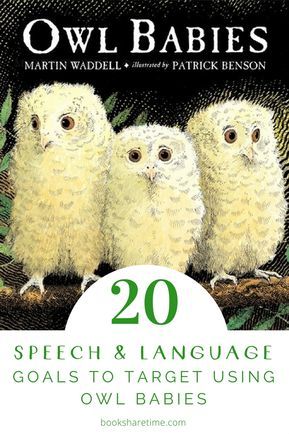 The Great Horned owl is just 35g (1.2oz) at birth, but reaches 800 grams (28oz) in just around 1 month!
The Great Horned owl is just 35g (1.2oz) at birth, but reaches 800 grams (28oz) in just around 1 month!
The thick fluffy down begins to give way to more typical adult feathers, but the down will remain for at least 2 months. Juvenile owls may well fledge the nest before they’ve lost all of their baby feathers but will likely resemble adult owls after around 14 weeks.
What is a baby owl called?
Baby owls are typically called owlets whilst they’re still in their fluffy down and are yet to develop feathers or adult plumage.
An extremely rare capture of some newly hatched long-eared owl owlets
What is a group of baby owls called?
Seeing a group of owls (a parliament or congress) is a rare enough sight as it is, but seeing a group of baby owls in the wild is exceptionally rare.
Owls typically lay small clutches, usually numbering just around 4 to 6 eggs, though some species lay as few as 1 to 3 and some 10 to 12, depending on the season. Overall, owls have secretive nests of just a small number of chicks, and owl chicks only spend 1 to 3 months in the nest before fledging and becoming independent. This is why you’re so unlikely to see baby owls together, even from the same nest.
This is why you’re so unlikely to see baby owls together, even from the same nest.
Three Little Owl Owlets in a tree nest
Do baby owls flock together?
It’d be very unlikely for the owlets of different mated owl couples to flock together. It is true that owls are primarily solitary, tending to isolate themselves in their monogamous pairs.
Some species, such as the Burrowing owl and Tawny owl, do flock together and live in small groups throughout some of the year at least, in which case owlets may spend some time mingling outside of their family units. In general, baby owls are highly independent as soon as they leave the nest after around 12 weeks at the most.
What do baby owls eat?
Owls are almost exclusively carnivorous, meaning they solely consume meat. Larger owls eat primarily mammals, reptiles, birds and fish whereas small owls are more likely to prey on insects, arthropods and small rodents.
Baby owls eat whatever their parents feed them. They’ll tear food into small chunks that the owlets can swallow whole.
They’ll tear food into small chunks that the owlets can swallow whole.
A Barred owl feeding their young
How do baby owls learn to hunt?
Baby owls receive practically no guidance or instruction on hunting and hunt on instinct alone. Juvenile owls will have to hunt for themselves after leaving the nest.
What do owl eggs look like?
Owl eggs are typically all-white and have no particularly unique identifying characteristics. Some owl species lay much more glossy and shiny eggs than others (e.g. the Tawny owl).
The eggs of a Tawny owl
How long do owl eggs take to hatch?
The eggs of many species of owls tend to hatch within 30 to 35 days. For example, both the Snowy, Little and Barn owl’s eggs hatch in 31 to 33 days. Eagle Owl eggs may take around 35 days to hatch. Thirty-two days seems like a reasonable average across all species of owls. This is around average amongst all birds of prey also.
When do owls lay eggs?
Owls typically lay their eggs in the springtime, usually no earlier than March. Some species of owls, such as the rare Blakiston's fish owl, do not lay eggs every year - if the winter is particularly harsh and they cannot hunt sufficient food, then they may skip a year entirely.
Some species of owls, such as the rare Blakiston's fish owl, do not lay eggs every year - if the winter is particularly harsh and they cannot hunt sufficient food, then they may skip a year entirely.
Other species such as the Great Horned owl and the Barred owl are known for laying their eggs very early in the year, sometimes even in the mid-winter of January and February. These eggs are incubated at very low temperatures - owls can successfully incubate eggs in outside temperatures of some -35°F (-37°C).
If food is scarce, the female may join the male to hunt, leaving eggs unattended in freezing temperatures.
A family of Great Horned Owls
How do owls feed their chicks?
The male typically takes on the role of the hunter during the owlet’s first few weeks, bringing food to feed both the female and the owlet. The female will rip this food up into tiny pieces that the chick can swallow whole. Owlets grow at an astonishing rate and are quickly able to consume the same diet as their parents.
The older chicks are usually fed first as they’re the largest and strongest in the nest, possibly even leaving the smallest, latest chicks to starve if food is scarce.
A barn owl feeding a young owl a mouse
When can baby owls fly?
The owlets of some species such as the Screech owl are ready to fly in just over 1 month, but others, such as the Great Horned owl, can take as long as 2.5 months. Like many birds of prey, owls are ‘born ready’ and develop quickly, developing flying and hunting skills by instinct rather than by watching their parents. Owls are quite distinctive in how quickly chicks become independent from their parents.
When do baby owls leave their nests?
Baby owls are relatively quick to leave their nests compared to other species of birds, with some leaving the nest after just four weeks or so. Other owl species will stay in their nests for longer, such as Barn owl owlets, who might stay with their parents for ten weeks. This is still a quick transition compared to other birds who often stay with their parents for the remainder of the spring and summer at least.
A family of Barn Owls
Do owls reuse nests?
Owl nests are generally too poor to reuse - they are not famed for their nest-building abilities!
Instead, owls tend to be opportunistic nesters and will take their chances at nesting in any sufficiently safe location. If they can help it, they’ll avoid building much of a nest at all, instead choosing to nest in tree hollows or abandoned buildings. They’re also excellent at stealing the nesting sites of other birds.
How long do baby owls stay with their parents?
Baby owls do not stay with their parents for long at all, sometimes as little as one month. This is relatively standard amongst birds of prey who are quick to become independent from their parents, establishing their own territories before the following winter comes.
A young Spotted Owlet sleeping on a branch
Do owls abandon their babies?
Despite the seemingly quick transition from an owlet to an owl, owl parents are dedicated to their chicks. They will not abandon them if they’re handled by humans and will not easily abandon a nest if it’s visited by other predators.
They will not abandon them if they’re handled by humans and will not easily abandon a nest if it’s visited by other predators.
Why do baby owls sleep with their heads down?
Some baby owls have been observed to sleep in a somewhat collapsed position with their heads down towards the floor. This is because their heads are large and heavy - they’re literally unable to hold them up for the first few days of their lives!
Expert Q + A
Ask a question
Do you have a question about this topic that we haven't answered? Submit it below, and one of our experts will answer as soon as they can.
Short-term care of a wild Barn Owl
This is a do-it-yourself guide for small to medium-sized owls
Administering fluid
It is important to recognise that owls rarely drink and gain virtually all the fluid they require from their food. Therefore, when an owl has not fed for more than a few days it becomes susceptible to dehydration, which can rapidly lead to organ failure and death. The severely emaciated individual will need re-hydrating before any attempt is made to feed it solid food. There is little point in putting a small bowl of water in the bird’s box, as the chances of it drinking are extremely slim.
Therefore, when an owl has not fed for more than a few days it becomes susceptible to dehydration, which can rapidly lead to organ failure and death. The severely emaciated individual will need re-hydrating before any attempt is made to feed it solid food. There is little point in putting a small bowl of water in the bird’s box, as the chances of it drinking are extremely slim.
When faced with a dehydrated bird, the experienced vet or rehabilitator will waste no time in re-hydrating it using a syringe and straight semi-rigid tube of exactly the right length. This technique should not be attempted by anyone who has not been shown exactly how to do it or does not have the right type of tube.
How to administer fluid
Although the process is slow and requires considerable patience, birds can be re-hydrated using a small soft artist’s paintbrush or a dropper. One teaspoon of glucose powder (or sugar in an emergency) should be dissolved in half a cup of boiling water and then left to cool until it reaches blood temperature or slightly higher (38-40 °C). Dip the paintbrush in the glucose solution and wipe it up and down the side of the owl’s beak. Some birds will respond by swallowing, although most will not. Plan B is to hold the beak open (no more than 25mm, less for a Little Owl) with one hand and touch the saturated brush on the back of the gape with the other hand, just beside the back of the tongue. Immediately let go of the beak and allow the bird to stop swallowing before opening the beak again. With care, fluid can be placed at the same spot using a dropper but never more than a few drops at a time.
Dip the paintbrush in the glucose solution and wipe it up and down the side of the owl’s beak. Some birds will respond by swallowing, although most will not. Plan B is to hold the beak open (no more than 25mm, less for a Little Owl) with one hand and touch the saturated brush on the back of the gape with the other hand, just beside the back of the tongue. Immediately let go of the beak and allow the bird to stop swallowing before opening the beak again. With care, fluid can be placed at the same spot using a dropper but never more than a few drops at a time.
How much fluid to give
Ideally, about 10 ml of fluid should be given. However, this requires considerable patience as 10 ml of fluid is the equivalent of around 150 drops. Continue with either method, administering as much fluid as possible. Leave the bird for a couple of hours then administer another 10 ml of fluid (2 teaspoons), followed by a few pieces of wetted food (see below). To start with, food morsels can be dipped in the glucose solution immediately prior to being given to the owl; this helps to stimulate swallowing and increases the fluid intake.
Barn Owls usually get their moisture intake from their food, so liquid that is administered separately is normally a supplement. The liquids will help avoid organ failure, which is a common cause of death in Barn Owls that have not eaten. 5 – 10 ml per day for one or two days may be sufficient, as long as the bird is eating. However, if the bird regurgitates food, then 5 – 10 ml of liquids can be administered three time a day.
Occasionally, a vet will recommend giving an emaciated owl liquid food such as Brand’s Essence or a soupy mixture of Hill’s Prescription Diet A/D mixed with slightly warm water. If you happen to have either of these, they may be given by paintbrush in addition to the glucose solution. Give up to 5 ml (1 teaspoon) daily as a supplement.
Please note that owls do not have a crop so the term ‘crop-feeding’ or ‘crop tubing’ should not be used.
Doing it on your own
Giving fluid is far easier if you have a helper to hold the bird. However, if you are on your own the most practical way to do it is to wrap the owl first in a towel and then adopt a sitting position. Loosely wrapping an owl is no help at all so please read How To Towel Wrap An Owl before you start or watch the video.
Loosely wrapping an owl is no help at all so please read How To Towel Wrap An Owl before you start or watch the video.
Feeding owls in care
It probably won’t eat
First and foremost, do not ever expect a newly arrived wild adult owl to eat voluntarily. Virtually all injured owls require a period of force-feeding before moving on to hand feeding or eating voluntarily. In short-term care (i.e. up to 10 days) many adult birds will need to be force-fed throughout, whereas others, particularly nestlings, may be eating voluntarily within 12 hours. A casualty or starving adult owl that picks up food items straight away and eats them voluntarily is almost certainly a bird that has escaped or been released from captivity.
What to feed a casualty owl
The best possible food for a casualty owl is that which most closely resembles its diet in the wild. Dead small mammals such as mice and young rats are ideal food, although they are rather expensive and for this reason the staple diet of most owls in captivity is dead day-old poultry chicks. In emergencies it is acceptable to use small pieces of raw chicken or raw lean beef but not lamb or pork. Do not give pure lean meat without roughage (such as fur or feathers) for more than 2 days at a time and never give bone without roughage. This is because the acidity of the stomach pH is not strong enough to dissolve bone and so the bones are regurgitated in pellets. If the bones are regurgitated without being bound in fur or feathers, they may obstruct or puncture the oesophagus. Never use cooked meat, canned pet food or any non-meat food (other than certain liquid feeds which may be prescribed by a vet in certain circumstances). Dead day-old poultry chicks and mice are available frozen from many pet shops and must be thoroughly defrosted before use, though not by using a microwave as this can make the bones brittle.
In emergencies it is acceptable to use small pieces of raw chicken or raw lean beef but not lamb or pork. Do not give pure lean meat without roughage (such as fur or feathers) for more than 2 days at a time and never give bone without roughage. This is because the acidity of the stomach pH is not strong enough to dissolve bone and so the bones are regurgitated in pellets. If the bones are regurgitated without being bound in fur or feathers, they may obstruct or puncture the oesophagus. Never use cooked meat, canned pet food or any non-meat food (other than certain liquid feeds which may be prescribed by a vet in certain circumstances). Dead day-old poultry chicks and mice are available frozen from many pet shops and must be thoroughly defrosted before use, though not by using a microwave as this can make the bones brittle.
How much to feed
Adult Barn Owls, Long-eared Owls or Short-eared Owls should consume approximately 2 chicks or 4 mice per 24 hours; a Tawny Owl should have 3 chicks or 6 mice; and a Little Owl 1-2 chicks or 2-3 mice. A wild owl is unlikely to recognise white mice or yellow chicks as food straight away but grey-brown food items may be eaten more readily. White or yellow-coloured food items should be cut up into 3-4 pieces and placed on a piece of wood or an upturned bowl in the box close to the owl, preferably with the innards of the food item facing up. Do not put the food in a dish, otherwise a single dropping can easily contaminate all of it.
A wild owl is unlikely to recognise white mice or yellow chicks as food straight away but grey-brown food items may be eaten more readily. White or yellow-coloured food items should be cut up into 3-4 pieces and placed on a piece of wood or an upturned bowl in the box close to the owl, preferably with the innards of the food item facing up. Do not put the food in a dish, otherwise a single dropping can easily contaminate all of it.
How to force-feed
Watch the video on how to feed an owl
1. Prepare the food. If using lean chicken or beef to feed a Barn Owl more than 6 weeks old, the total amount you should prepare for 24 hours is around 70 grams (this is about enough to fill two small matchboxes) or use 4 average-sized mice. When first feeding a new casualty, you probably will not use more than a few morsels. Make sure the meat is fresh, at room temperature, and not dried. Cut up into pieces about the size of your thumbnail. If using day-old poultry chicks, discard the yolk sacs and the featherless part of the legs. Cut each chick into 6 pieces of roughly equal size. Holding the day-old chick above newspaper and using scissors is a practical method. If force-feeding a Little Owl use pieces no bigger than the size of your finger nail.
Cut each chick into 6 pieces of roughly equal size. Holding the day-old chick above newspaper and using scissors is a practical method. If force-feeding a Little Owl use pieces no bigger than the size of your finger nail.
2. Position the owl. Either ask a helper to hold the owl in a vertical position or wrap the owl, then sit on a stool and place the wrapped owl vertically between your thighs, facing either to the left or right, depending on whether you are left or right handed.
3. To open the beak, calmly bring one hand from behind the owl, just over the head, and take hold of the upper mandible between your thumb and index finger. Open the beak with the thumbnail of your free hand (max 25mm, less for a Little Owl) and hold it open with the 2nd or 3rd finger of your beak-holding hand.
4. Feed one piece at a time. Now with your free hand take a piece of meat/mouse/chick, briefly dip it in tepid fluid and then put it on the tongue and gently push it into the back of the open gape, so that it is in the throat just behind the windpipe opening (at the back of the tongue).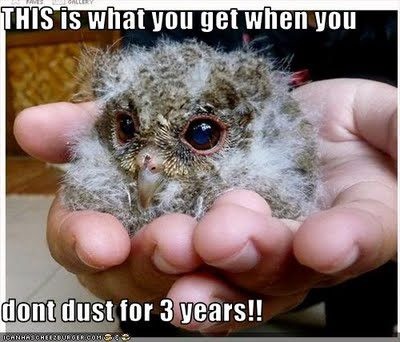 Immediately release the beak and with any luck the owl will swallow within roughly a minute. If it does not, gently push the food a little further down the throat and release the beak again. Eventually it should swallow. Wait 30–60 seconds after the swallowing has stopped and then repeat the procedure. Even if the feeding is easy, always wait before giving the next morsel. This gives time for the previous one to move down the neck and reduces the chance of food regurgitation.
Immediately release the beak and with any luck the owl will swallow within roughly a minute. If it does not, gently push the food a little further down the throat and release the beak again. Eventually it should swallow. Wait 30–60 seconds after the swallowing has stopped and then repeat the procedure. Even if the feeding is easy, always wait before giving the next morsel. This gives time for the previous one to move down the neck and reduces the chance of food regurgitation.
5. Watch the owl and always be sensitive to its response. If it has swallowed several morsels quite easily and then becomes reluctant, leave it for about 10 minutes and try again. If it is still reluctant, leave it for 8 hours then try again. Also take account of the bird’s condition; if it is in the process of drying out or warming up and starts to shiver, stop the feeding and return it to a warm position. If it is very thin, remember that for the first 24 hours, fluid is a higher priority than food.
Suitable containers for owls in short-term care
Solid-sided plastic pet carrier boxes are good, but can be hard to clean out unless they come apart easily.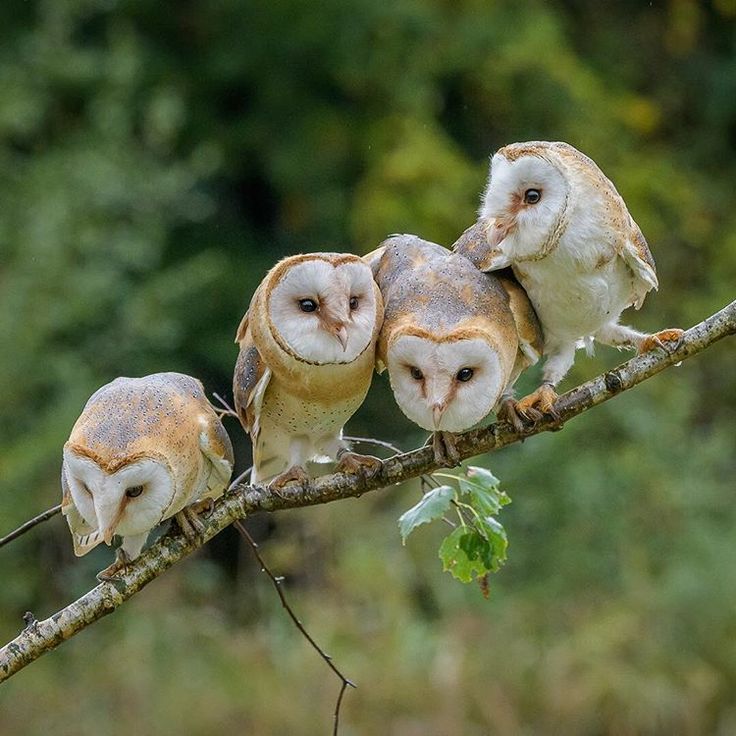 If you are only keeping the owl for a short time and have an ample supply of cardboard boxes, there is no reason why you should not keep the bird in a cardboard box and simply replace the box every day, recycling or composting the old one. Alternatively, use an open-topped plastic storage box with a fridge shelf or a piece of weld mesh weighted down on top. Whatever container you use, it only needs to be slightly taller than the owl, at least the same width as the height, and twice as long. The best thing to place in the bottom of the box is a thick towel wrapped around a newspaper folded to size. This aids checking for any change in the colouration of droppings and makes it easy to spot uneaten food items and pellets. Once the owl is eating well, the box lining is usually changed to a thick layer of heavily compressed shredded paper (c. 200mm of shredded office waste trampled down to 30mm). The use of straw, hay, woodflakes, sawdust, sand or gravel is not recommended.
If you are only keeping the owl for a short time and have an ample supply of cardboard boxes, there is no reason why you should not keep the bird in a cardboard box and simply replace the box every day, recycling or composting the old one. Alternatively, use an open-topped plastic storage box with a fridge shelf or a piece of weld mesh weighted down on top. Whatever container you use, it only needs to be slightly taller than the owl, at least the same width as the height, and twice as long. The best thing to place in the bottom of the box is a thick towel wrapped around a newspaper folded to size. This aids checking for any change in the colouration of droppings and makes it easy to spot uneaten food items and pellets. Once the owl is eating well, the box lining is usually changed to a thick layer of heavily compressed shredded paper (c. 200mm of shredded office waste trampled down to 30mm). The use of straw, hay, woodflakes, sawdust, sand or gravel is not recommended.
Other relevant pages:
- Should I pass it on?
- Finding a rehabilitator.
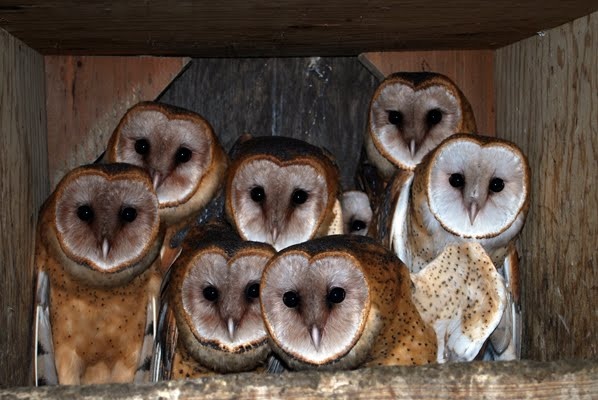
- There is more on this topic in the Barn Owl Conservation Handbook.
Feeding little owlets: bjorn_varulv — LiveJournal
Owlets are born covered in white down and blind.Feeding such an owlet is a difficult and responsible task. It is better if specialists do this, but specialists in feeding owls are a very rare thing in the world and in our country in particular. There are almost no correct recommendations on the Internet, and those that are, unfortunately, are most often based on information copied from each other and contain the same errors. Which in the end can lead to the death of the chicks. nine0002 It must be understood that owls have a very specific digestion, which is different from the digestion of other birds of prey. And advice on rearing diurnal predators is not good for owlets, if only for the simple reason that owlets, unlike falcons and hawks, do not have goiter. Their digestive system is arranged differently, so it is important to listen to the recommendations of an experienced specialist in owls, and not in birds of prey in general.

The photo shows a Tawny Owl owlet just hatched from an egg. nine0007
How to maintain?
Newborn owlets need constant heating: the temperature should be maintained at about 37 degrees Celsius. Owlets can be placed, for example (as the simplest option), in a "nest" made of a box and a terry towel, and heating is carried out using a 40-60 W incandescent lamp, after setting it at such a distance from the nest to provide the desired temperature. It is dangerous to both overheat and overcool the chicks.
How often to feed?
Owls need to be fed very often during the first few days. If these are small species of owls, such as splyushki or owls, you need to feed every half an hour with a break for a night's sleep no longer than four hours. Larger ones, such as Tawny Owls, Long-eared and Short-eared Owls, need to be fed every hour with a break for a night's sleep of no longer than five hours. As you grow older, the frequency of feeding should be reduced.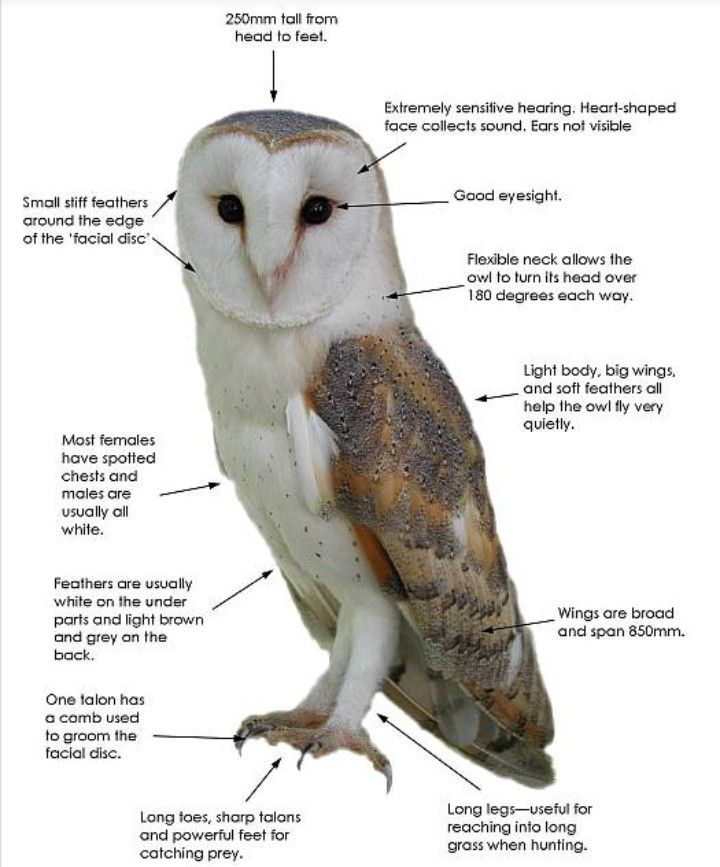 Monthly owls are enough to feed 5-6 times a day.
Monthly owls are enough to feed 5-6 times a day.
You should always feed when the owls require food. Until full saturation. Owlets eat a lot and a lot. For example, a week-old eared owl owlet eats five or six quail breast fillets per day, that is, about half of its own weight. nine0002 The main rule: it is impossible to overfeed the owlets! But underfeeding - easily.
What to feed?
Owlets grow rapidly and the slightest mistake in the diet and diet instantly affect their health.
Owl food must be nutritious and contain sufficient amounts of essential vitamins, trace elements, minerals and amino acids. An ideally balanced food for owls in this respect is the meat of domestic quails. This meat contains a lot of calcium, which is extremely important for the body of owls, especially in the first days of life. nine0008
Almost all advice on feeding owls that can be found on the Internet contains a serious mistake: they recommend feeding owls with meat with bones and hair, regardless of the age of the owlet.
But the fact is that the body of very young owlets is not yet able to get rid of undigested parts of food, that is, newborn owlets are not able to form and shed a pellet.
The mother owl feeds her newborn babies by carefully choosing the meat, pinching off small pieces like with tweezers. The first few days of life, owls need to be fed with muscle fibers alone, and quail breast fillets are best suited for this purpose. When the owls begin to open their eyes, you can gradually start feeding pieces of meat with a small amount of wool, fluff and small, not hard bones. To begin with, you can feed the owlet a quail neck cut into pieces, and then be sure to wait for the owlet to drop the pellet. This should happen within six to eight hours of feeding the first meal with solids. During this period, you need to continue to give only muscle fibers. If there are no pellets during the day, you can give another quail neck or a similar small amount of small, not sharp bones and wool or fluff, and wait again. If the pellet does not appear for the second time, it is necessary for another two or three days not to give food with solid particles, to feed only soft ones. During this time, the owlet will grow up and his body should begin to cope with the removal of undigested particles to the outside. nine0008
If the pellet does not appear for the second time, it is necessary for another two or three days not to give food with solid particles, to feed only soft ones. During this time, the owlet will grow up and his body should begin to cope with the removal of undigested particles to the outside. nine0008
The same rule applies to weakened owlets who, for some reason, lag behind in development. Recently, there was a case when people who had never fed owls undertook to feed the owls. Newborn owlets were fed too infrequently and insufficiently nutritious food, which soon led to intestinal atony in one of them. Then the weakened owlets began to be fed with chickens cut into pieces - along with bones and fluff. Two of the four owls were severely retarded in development, and one also had characteristic fractures of both legs and wings, which happen when the chicks are clumsily picked up, lifting by the limbs for fear of crushing. The organisms of these babies could not cope with the formation of the pellet, and although the people who fed them saw that there were no pellets, they continued to give pieces of chicken with bones and fluff, believing that maybe the bones were being digested. As a result, weakened babies died, painfully trying to burp the bones accumulated in their bellies - the first at the age of 7 days, the second at 10. The third baby also began to lag behind in development, fell ill with rickets, but still he was larger and stronger and after a while pushed out the accumulated in the stomach a lump of bones and chicken down. And only one of the four developed normally, perhaps because initially he received more food and this allowed his body to cope with the test. nine0008
As a result, weakened babies died, painfully trying to burp the bones accumulated in their bellies - the first at the age of 7 days, the second at 10. The third baby also began to lag behind in development, fell ill with rickets, but still he was larger and stronger and after a while pushed out the accumulated in the stomach a lump of bones and chicken down. And only one of the four developed normally, perhaps because initially he received more food and this allowed his body to cope with the test. nine0008
When should one start feeding "normal owl food"? The rule is this: if the owlet does not lie, but sits confidently, actively tries to swallow his fingers when they touch the beak, if his eyes have already begun to open, you can give a quail neck and wait for the first guess. This is like an indicator of whether the owlet's body is ready for coarser food.
Rougher food is newborn mice, minced quail, ground together with bones (tubular bones must first be removed so that sharp fragments do not form!), adult mice cut into pieces. A little later, you can start giving pieces of day-old chickens - there are fewer nutrients in such feed, and there are a lot of bones and fluff. nine0002 At the age of one month, the owlet should already receive ordinary owl food, that is, for example, owl owls are able to swallow small mice whole.
A little later, you can start giving pieces of day-old chickens - there are fewer nutrients in such feed, and there are a lot of bones and fluff. nine0002 At the age of one month, the owlet should already receive ordinary owl food, that is, for example, owl owls are able to swallow small mice whole.
(Of course, we are not talking about feeding owls with live animals - as well as adult owls kept in captivity.)
Do I need to drink water?
Owlets need to get enough fluids so that their kidneys can successfully remove harmful substances formed during the life of the body. You need to water the owls carefully so that the owlet does not inhale the liquid. You can give water drop by drop from a pipette on the side of the beak, but the easiest way is to dip pieces of food in water before feeding them. nine0008
What about vitamins?
When feeding an owlet with quality food, such as meat of domestic quail, additional vitamin preparations are not required. It must be remembered that synthetic vitamins are easy to overdose, and an overdose of vitamins is more dangerous than their lack.
It must be remembered that synthetic vitamins are easy to overdose, and an overdose of vitamins is more dangerous than their lack.
As a natural source of vitamins, it can be recommended to feed raw chicken liver to owlets once a day. This is quite enough to maintain balance, synthetic vitamins for the prevention of beriberi do not need to be used. nine0008
Since a growing body requires a lot of calcium, it is recommended to use the Calcium-Sandoz drink as drinking water. Tablets for the preparation of this drink are sold in a human pharmacy. They must be diluted at the rate of a quarter tablet per 100 ml of water, and of course you need to wait until the gas comes out. You can start giving your owlet this drink in place of regular water from a week old until its plumage is fully formed.
It is very important for a growing owlet to receive a sufficient amount of ultraviolet light every day, because under its influence the body produces vitamin D, which promotes the absorption of calcium. It is best to provide the owlet with a safe stay in sunny penumbra, for example, the “nest” should be covered with two or three layers of cotton tulle and in this form you can sunbathe the owlets for two to three hours a day. Of course, you need to remember that owls should not be left unattended on a balcony or in a personal plot. But I will write a separate article about security. nine0008
It is best to provide the owlet with a safe stay in sunny penumbra, for example, the “nest” should be covered with two or three layers of cotton tulle and in this form you can sunbathe the owlets for two to three hours a day. Of course, you need to remember that owls should not be left unattended on a balcony or in a personal plot. But I will write a separate article about security. nine0008
And remember that foster owlets should not be released into the wild! They cannot be released even if they were "trained to hunt" at home, that is, they were baited on live mice. Anyway, in nature, such owls have no chance to survive and adapt to a normal life.
So please don't feed the owls with live animals, don't teach them to kill, they don't need it, and this is unnecessary cruelty.
I wish good luck to all bird rescuers and health to your pupils!
How to properly feed an owl: bjorn_varulv — LiveJournal
It's no secret that proper nutrition is very important for the health of any living creature. Caring owners try to feed their pets so that they live long, do not get sick, remain active and enjoy life. With the development of the Internet, many forums and portals have appeared with recommendations on the nutrition of dogs, cats, parrots, turtles, rabbits, fish and all kinds of other animals. For most of the creatures that people keep at home, the diet is well studied and it is only necessary to put into practice the knowledge gained. nine0008
Caring owners try to feed their pets so that they live long, do not get sick, remain active and enjoy life. With the development of the Internet, many forums and portals have appeared with recommendations on the nutrition of dogs, cats, parrots, turtles, rabbits, fish and all kinds of other animals. For most of the creatures that people keep at home, the diet is well studied and it is only necessary to put into practice the knowledge gained. nine0008
On websites and forums of bird lovers you can find recommendations on feeding a variety of birds, and as a rule, these are competent tips, proven by the experience of many amateurs and professionals.
But it happens that erroneous information is replicated from one site to another, and this eventually leads to disastrous results.
Unfortunately, this is also the situation with recommendations for feeding owls.
Owls as pets became popular after the release of the Harry Potter books and films. If earlier only rare - and usually very experienced - bird lovers dared to keep an owl at home, now this phenomenon has become widespread. nine0008
nine0008
I won't touch on aspects of the trade in owls now - I will only say that in most cases it is illegal: birds obtained from nature are sold under the guise of "owls from the nursery". One way or another, when a person takes responsibility for the life of an owl, he begins to look for information on how to properly feed it. And most of the time they get the wrong information.
I want to talk about how to avoid the most common mistake in feeding owls, and what it entails.
There is an opinion among people "in the know" that owls, when kept in captivity, should receive food that is as close to natural as possible. It is well known that owls are predators, most species in nature feed mainly on mouse-like rodents, swallowing them most often whole. In the stomach of an owl, this food is partially digested, the softened parts pass further into the small intestine, where the final absorption of nutrients takes place, and the undigested fragments from the stomach through the esophagus are thrown out in the form of a dense lump called a pellet. nine0008
nine0008
Based on these facts, some time ago, back in the middle of the last century, it was concluded that for normal digestion, owls need food with a lot of bones, wool and other indigestible particles. To date, the vast majority of recommendations for feeding owls in captivity focus on this. As a result, many owls at home and in zoos are kept on a diet of mice and day old chicks. Small species of owls are also given insects. Instead of mice, other animals can be used, instead of chickens - quails or other birds, but in general the picture is the same. nine0008
As a result, an owl sitting on such a supposedly close to natural diet falls ill and dies. For some, this period is calculated literally in weeks, others can live for several years, but in any case, this period is not comparable with the decades measured by nature even for small species of owls.
Why is this happening?
The fact is that, firstly, in nature, owls eat much more diverse than it is commonly believed among amateurs, and secondly, their digestion in the wild works a little differently than in the limited conditions of home or aviary keeping.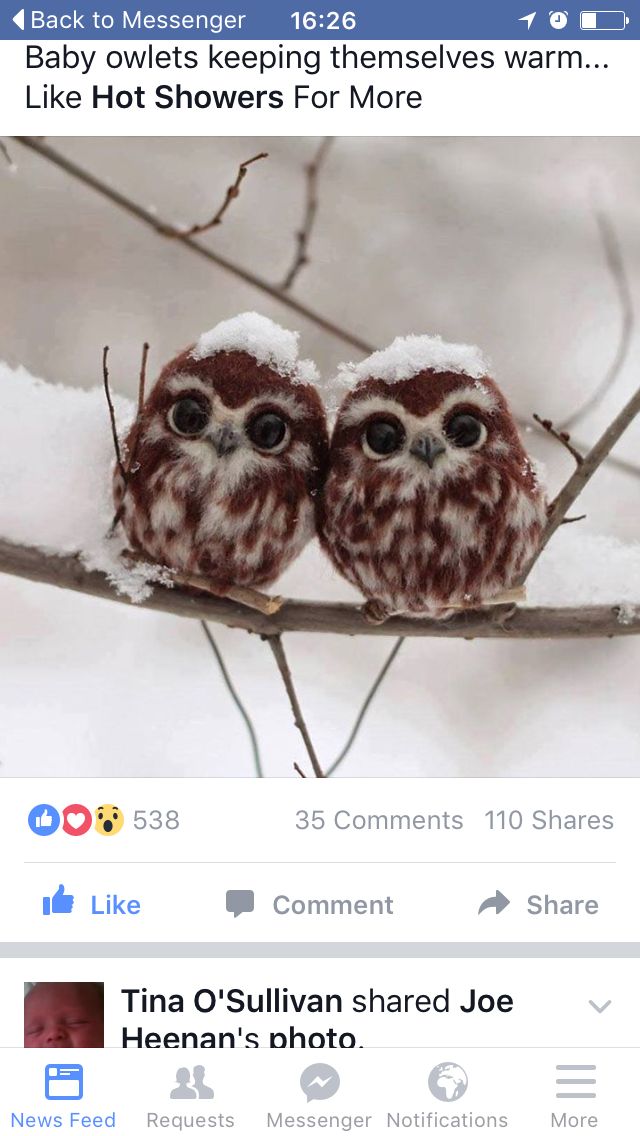 nine0008
nine0008
In nature, the owl is polyphagous, it is not satisfied with a mono-diet, but has the ability to choose. Even in the last century, ornithologists who studied owls found out that owls are very individual in their preferences, even within the same species, and try to diversify the menu. Many owls make supplies, not only hunt, but also eat carrion, and their body is able to absorb not only animal, but also plant food. In addition, in the wild, an owl moves a lot and, which is also important, it lives in accordance with the internal rhythms of its body, no one sets a regimen for it. The amount and composition of her food can vary significantly depending on the needs of the current moment. The peristalsis of the gastrointestinal tract is thus much more active, it is easier for the body to cope with the removal of undigested particles from the stomach. After eating, the owl spends some time in a secluded place where no one bothers her, and rhythmically "yawns" - at this moment a pellet is formed in the stomach, which the owl will then discard. nine0008
nine0008
And in conditions of captivity, the owl's stomach contracts more sluggishly, moreover, often the owl has nowhere to hide from the circumstances that disturb it. She is forced to eat only what she is given. To get the required amount of nutrients, a hungry owl will swallow any food. And if it is contained on a diet in which there are too many bones, wool, feathers, chitin, the body does not have time to remove everything that has not been digested from the stomach. Part of it comes out as a pellet, the rest, in a larger or smaller amount, enters the small intestine, gets stuck there and begins to rot. Sometimes even large bones or hairballs get into the intestines, which leads to blockage or rupture of the intestinal walls, but more often small undigested particles gradually move from the small intestine to the large intestine, accumulate, slowly rot and cause necrosis (necrosis) of tissues. nine0008
In recent years, I have increasingly come across cases of death of pets that were diligently fed "correctly" - for example, only mice or day old chicks. At autopsy, the same picture is found.
At autopsy, the same picture is found.
For specialists, here is an autopsy report on one such case. This is the owl in the photo... I would like to prevent other similar ridiculous and painful deaths.
Post-mortem report of a long-eared owl, approximately one year old. The autopsy was performed by students of the Kharkov State Veterinary Academy in the operating room of the Department of Surgery. nine0011
The owl was purchased from merchants on 03/25/18. During the initial clinical examination, the animal was observed: depression, disorientation, impaired coordination of movements, lameness, progressive cachexia, refusal to feed. The ongoing symptomatic treatment and forced feeding did not bring positive results. The animal died on 03/26/18.
External examination: General view of the corpse. Rigor mortis is strongly pronounced. The body of an owl is proportional, correct addition, insufficient fatness, exhaustion is diagnosed on palpation. Weight 231 grams. Outer covers. Feathers are dull, wrinkled. The tarsus of the right limb is damaged, an old fracture is obvious. Muscles are poorly developed, atrophied in places. The beak is open. The subcutaneous tissue is poorly developed. heart sac and epicardium moist, shiny, dark red. The position of the heart is anatomically correct, the shape is cone-shaped. No exudate was found in the trachea and bronchi. The abdomen is very swollen. There is a strong putrid odor from the body. Internal examination: Abdominal cavity. The stomach and intestines were severely damaged, multiple necrosis and intestinal perforations were found, through which the contents leaked into the abdominal cavity. The liver is gray, moist, shiny. The kidneys are not enlarged. nine0008
Outer covers. Feathers are dull, wrinkled. The tarsus of the right limb is damaged, an old fracture is obvious. Muscles are poorly developed, atrophied in places. The beak is open. The subcutaneous tissue is poorly developed. heart sac and epicardium moist, shiny, dark red. The position of the heart is anatomically correct, the shape is cone-shaped. No exudate was found in the trachea and bronchi. The abdomen is very swollen. There is a strong putrid odor from the body. Internal examination: Abdominal cavity. The stomach and intestines were severely damaged, multiple necrosis and intestinal perforations were found, through which the contents leaked into the abdominal cavity. The liver is gray, moist, shiny. The kidneys are not enlarged. nine0008
Pathological anatomical diagnosis
1. Alimentary dystrophy.
2. ?
What should be the food for captive owls?
As our many years of experience in caring for these beautiful birds shows, owls feel best on a diet in which food with feathers, bones, wool, chitin and other indigestible particles makes up no more than one third of the total. The remaining two-thirds should be soft foods that can be completely digested. They may vary depending on the species characteristics of the diet of owls, for example, for fish-eating species, fish should be present in the diet, for insectivorous species, insect larvae, as well as fruits and berries. But in general, the basis of the nutrition of an owl kept at home or in open-air cages should be offal: chicken, turkey or quail hearts, liver, muscle stomachs, you can also give nutrient-rich dietary meat for a change, such as quail fillet, turkey or rabbit meat. All food is fed to owls without heat treatment, so it is better to purchase products from large firms that have proven themselves in the market, since there are less chances for errors in sanitary control. Visible fat should be trimmed as much as possible. Meat and offal of ungulates are not suitable for owls. nine0008
The remaining two-thirds should be soft foods that can be completely digested. They may vary depending on the species characteristics of the diet of owls, for example, for fish-eating species, fish should be present in the diet, for insectivorous species, insect larvae, as well as fruits and berries. But in general, the basis of the nutrition of an owl kept at home or in open-air cages should be offal: chicken, turkey or quail hearts, liver, muscle stomachs, you can also give nutrient-rich dietary meat for a change, such as quail fillet, turkey or rabbit meat. All food is fed to owls without heat treatment, so it is better to purchase products from large firms that have proven themselves in the market, since there are less chances for errors in sanitary control. Visible fat should be trimmed as much as possible. Meat and offal of ungulates are not suitable for owls. nine0008
I will dwell on this issue in more detail.
By-products contain a huge amount of vitamins, minerals and other substances necessary for the normal functioning of the body of an owl. For example, chicken liver is rich in phosphorus, iron, magnesium, potassium, it contains calcium, sodium, selenium, zinc, vitamins A, C, E, PP, B1, B2, B6, B9, B12, as well as K and B5. Chicken hearts are high in easily digestible protein, essential amino acids and vitamins, and rare but important health minerals such as manganese, copper, molybdenum and cobalt. In addition, they contain coenzyme Q10 - a substance necessary for the normal course of metabolic processes and immunity. Chicken stomachs, in addition to many vitamins and minerals, contain fiber that promotes proper digestion, and a huge set of essential and non-essential amino acids: arginine, valine, histidine, isoleucine, leucine, lysine, methionine, threonine, tryptophan, phenylalanine, glycine, proine, tyrosine , cysteine, glutamic acid and others. nine0008
For example, chicken liver is rich in phosphorus, iron, magnesium, potassium, it contains calcium, sodium, selenium, zinc, vitamins A, C, E, PP, B1, B2, B6, B9, B12, as well as K and B5. Chicken hearts are high in easily digestible protein, essential amino acids and vitamins, and rare but important health minerals such as manganese, copper, molybdenum and cobalt. In addition, they contain coenzyme Q10 - a substance necessary for the normal course of metabolic processes and immunity. Chicken stomachs, in addition to many vitamins and minerals, contain fiber that promotes proper digestion, and a huge set of essential and non-essential amino acids: arginine, valine, histidine, isoleucine, leucine, lysine, methionine, threonine, tryptophan, phenylalanine, glycine, proine, tyrosine , cysteine, glutamic acid and others. nine0008
Thus, being on a diet that mainly consists of various by-products, the owl receives with food a complete set of macro- and micronutrients, thanks to which all its organs and systems can function in a balanced way. Food with a large amount of indigestible particles serves mainly as material for the formation of the pellet and should be considered only as a supplement to the main diet.
Food with a large amount of indigestible particles serves mainly as material for the formation of the pellet and should be considered only as a supplement to the main diet.
It should be noted that the particles of muscular stomachs also come out in the form of pellets. When feeding weakened owls recovering from illness and injury, it is advisable to completely exclude food with coarse solid particles, such as wool, bones and feathers - in the period until complete recovery, replace it with twice the amount of muscle stomachs. And for emaciated or recently seriously injured owls, it is necessary for some time to feed in the form of mashed chicken or turkey liver puree, with a gradual transition to denser food in the form of offal, cut into pieces. The pieces should be of such a size and shape that the owl can swallow them without difficulty - in particular, chicken hearts are best cut lengthwise, because the transverse slices can be put on the top of the beak. In some cases, it is permissible to feed growing owlets and adult convalescent owls minced meat from various offal and quail carcasses, ground together with bones. And of course, in each case, when transferring an owl to a standard diet, you need to monitor whether it can cope with food on its own: for example, some even large owls refuse to offer whole stomachs or mice, while others, on the contrary, sometimes do not want to eat too finely chopped food. nine0008
And of course, in each case, when transferring an owl to a standard diet, you need to monitor whether it can cope with food on its own: for example, some even large owls refuse to offer whole stomachs or mice, while others, on the contrary, sometimes do not want to eat too finely chopped food. nine0008
When rearing owls, it is important to remember that a rapidly growing body needs a huge amount of calcium, much more than an adult owl. For newborn owls, an excellent source of calcium, as well as vitamin D and other macro- and microelements necessary for its absorption, is quail meat, which should be given at first without any solid particles, and later (from about a week and a half, depending on the species) - crushed together with small bones. Tubular bones should be removed to avoid the formation of sharp fragments. And only after the owlet sheds the first pellet, you can begin to feed him "adult" food, gradually adding to the quail. nine0008
The diet developed by us showed excellent results: with the content of more than three dozen owls of eight species, even those who came to our shelter with severe metabolic and perogenesis disorders acquired an excellent shape after a while.